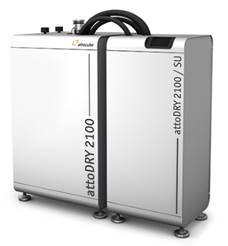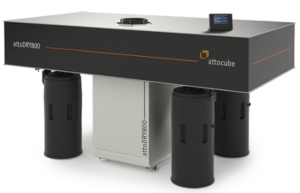Optics labs
The optics (laser) labs in I-FIM utilize spectroscopy and microscopy to study a wide array of heterostructures and layered materials. The spectroscopy measurements involve shining laser excitation on research samples, and detecting their emission/absorption spectra as a function of the excitation energy via high-resolution low-noise spectrometers and cameras. Further, a comprehensive spectral map of the sample is obtained by manipulating the incident laser excitation to different spots on the microscopic samples using piezoelectric positioners with nanometer range. The excitation components include multiple lasers covering the full spectrum from Ultra Violet (UV), through visible to Infra-Red (IR), as well as ultrafast femtosecond lasers to perform time-resolved studies. Broadly, there are two categories of experimental setups for performing optical measurements – (a) the room temperature apparatus to allow ambient characterization and (b) low temperature configurations which provide the additional measurement knobs of temperature and magnetic field.
|
List No. |
Key specifications for existing equipment |
Picture |
| A. | Spectrometers
Princeton spectrograph with 750 mm focal length and scanning monochromator that features an astigmatism-corrected optical design, a mechanical scanning range of 0–1500 nm, as well as resolution of >0.05 nm. Equipped with avalanche photodiodes, CCD’s and InGaAs detectors to facilitate different measurements such as Raman, photoluminescence, fluorescence, transmission and absorption. Spectrograph 1
Spectrograph 2
Spectrograph 3
Spectrograph 4
|
 |
| B. | Cryostat 1
Cryogen free closed-loop system with a cold objective and low temperature scanning probe microscope (SPM). Extremely useful to produce spectral maps within short duration.
|
 |
| C. | Cryostat 2
Cryogen free closed-loop system with 2 inserts – 1) a scanning confocal microscope (CFM) with cold objective, 2) an insert to perform low-temperature atomic force microscopy (AFM) and magnetic force microscopy (MFM).
|
 |
| D. | Cryostat 3
Low-vibration cryocooler integrated into an optical table to allow flexible switching between different optical excitation and detection paths, via easy manipulation of the optomechanical elements.
|
 |
| E. | Cryostat 4:
Cryogen free closed-loop system with 3 inserts – 1) a scanning confocal microscope (CFM) with cold objective, 2) an insert to perform low-temperature atomic force microscopy (AFM) and magnetic force microscopy (MFM) 3) an insert with a built in Diamond Anvil Cell (DAC) for high pressure (>10 (GPa) microscopy
|
 |
| F. | Lasers
List of existing lasers to cover the wide spectrum of materials being studied
|
